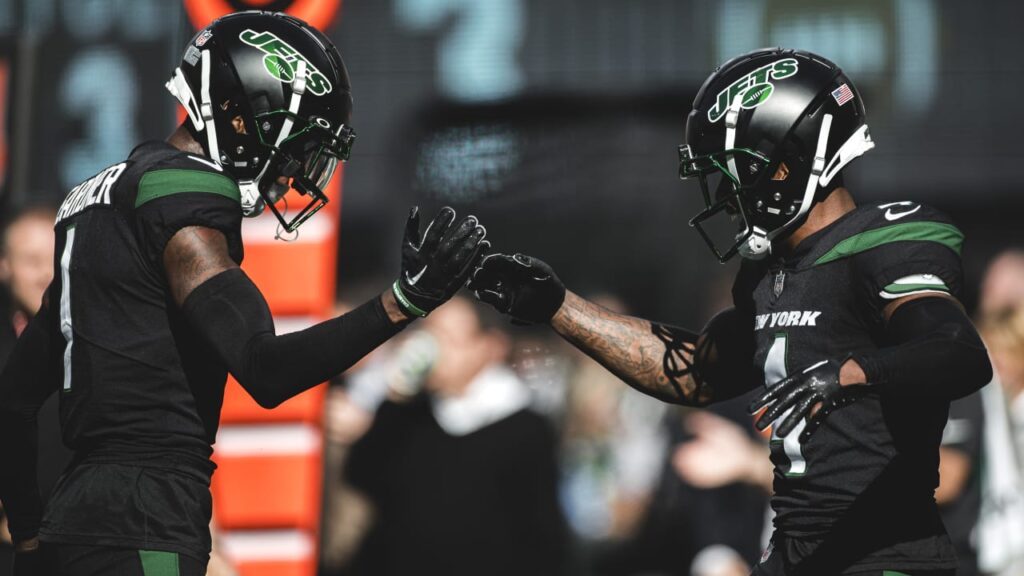The New York Jets had a stellar year on defense this season, much to the contrary of their struggling offense. They found their star cornerback duo in Sauce Gardner and DJ Reed, and Quinnen Williams also had a dominant year. There are some holes that still need to be filled, namely those of safety and linebacker, but this defense was a huge bright spot this season. Let’s dive into the number 1 PFF graded defense’s stats from 2022.
Team Defense Stats
The New York Jets defense allowed 316 points through 17 games (18.6 per game average), which ranks 4th in the NFL. The Jets held opponents to 20 or less points in 11 games, which is outstanding. However, with the offense’s struggles at putting points on the board, the Jets only went 6-5 in those games. In terms of EPA (expected points added), the Jets defense accumulated 78.8 EPA in 2022, which again ranks 4th in the NFL.
Diving into opponents’ red zone efficiency, the Jets defense only allowed touchdowns on 47.8% of opponents’ red zone trips. Holding opponents to field goals was a big strength of this defense. The Jets defense also only allowed opponents to convert 38.1% of third downs, which ranks 11th in the NFL.
Passing Defense
The Jets defense allowed an average of 189 passing yards per game, which ranks 3rdth in the NFL. Breaking this down by game, the Jets defense allowed zero games with over 300 passing yards, 7 games with between 200-300 passing yards, and 10 games with between 100-200 passing yards. Not allowing a 300 yard passer all season is insane, and that’s a testament to the strength of the Jets coverage unit. The game with allowing the most passing yards was Joe Burrow in Week 3, where he threw for 261 yards, and the game with allowing the least passing yards was Josh Allen in Week 14, where he threw for only 130 yards.
The Jets defense only allowed an average passer rating of 80.5, which ranks 2nd behind only the Bengals defense. They also only allowed 15 passing touchdowns (least in the NFL), a completion percentage of 62.4% (9th lowest in the NFL), and a longest pass of 56 yards (the 3rd shortest). They didn’t have the most amount of interceptions (only 12), but the coverage unit was so strong at breaking up passes. Finally, the Jets’ pass rush accumulated 45 sacks, 7th most in the NFL.
Rushing Defense
The Jets defense allowed an average of 121.6 rushing yards per game, which ranks 16th in the NFL; and their yards per rush allowed was only 4.2. Breaking it down by game, the Jets defense had 3 games with allowing over 150 rushing yards, 10 games with allowing 100-150 rushing yards, 1 game with allowing 76-100 rushing yards, and 3 games with allowing below 75 rushing yards. There are certainly things to clean up in the Jets run defense, but it was much stronger than it was in 2021. The game with allowing the most rushing yards was Week 17 vs the Dolphins, where Jets allowed 198 rushing yards, and the game with allowing the least rushing yards was Week 6 vs the Packers, where the Jets only allowed 60 rushing yards.
The Jets defense allowed 14 rushing touchdowns, which was the middle of the pack in terms of rankings in the NFL. Their longest rush allowed as 60 yards to Kenneth Walker, and they did not recover any rushing fumbles in 2022 (that stat excludes strip sacks). Recovering fumbles was one of the low points for the Jets defense, and that stat will look to improve in 2023.
Defensive Player Specific Stats
Sauce Gardner is an outstanding and generational player. A runaway for Defensive Rookie of the Year, Sauce earned First Team All-Pro and Pro Bowl accolades as a rookie! He certainly made the case to have been picked first overall, but us Jets fans are glad we were able to get him at pick #4. Looking at some of his stats, Sauce led the league in passes defended with 20, and you could make the case that he had even more. He intercepted 2 passes, added 75 total tackles, and wasn’t thrown at that often since he was such a lock down cornerback.
CJ Mosley had a great season that ended with Second Team All-Pro and a Pro Bowl selection himself. He was 4th in the league in tackles on pass plays with 76, and was 6th in the league in solo tackles with 99.
Quinnen Williams also had a stellar year, and he too got First Team All-Pro and Pro Bowl accolades. He was 11th in the league in sacks with 12, 9th in the league in quarterback hits with 26, and tied for 19th in the league in tackles for loss with 12. His brother Quincy Williams was one of the players who tied Quinnen with 12 tackles for loss.
Bryce Huff had a great season with the limited playing time that he saw, but whenever he was on the field, he was a gamechanger. Huff had the 9th highest pressure rate in the NFL, generating pressure on the quarterback on 22% of his defensive snaps. That’s an outstanding rate, and he’s made the case to be brought back in a bigger role next season.
